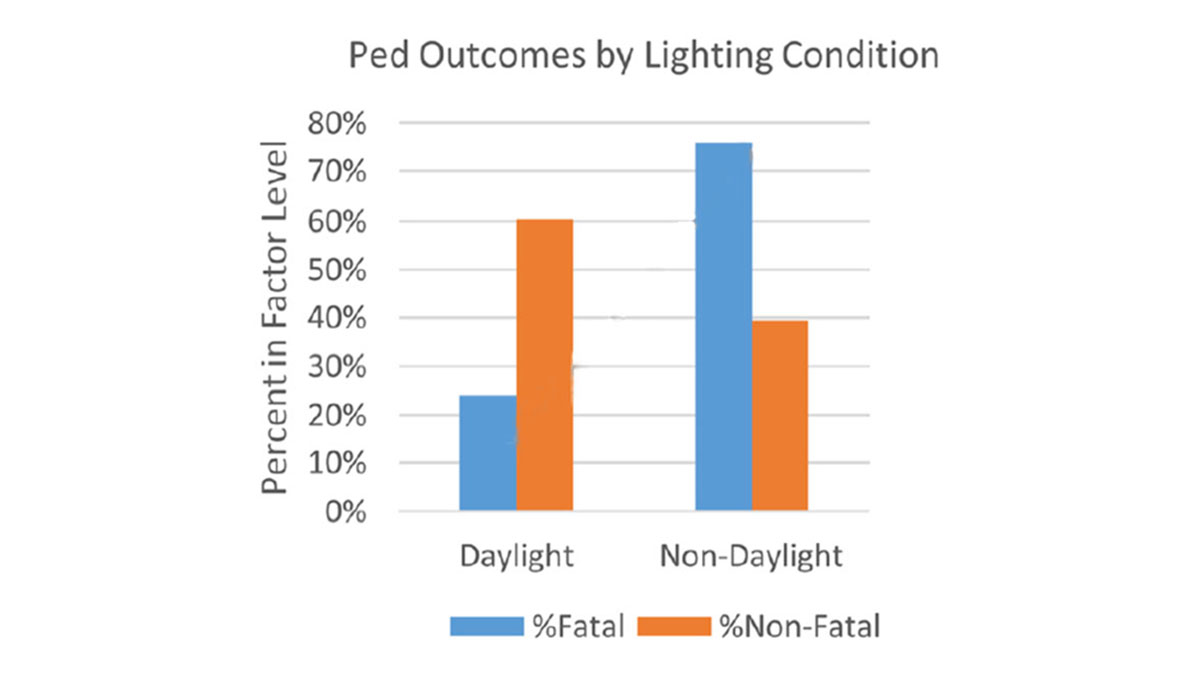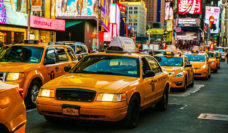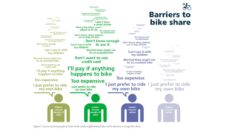Every year, car companies tout their vehicles’ newest road safety technology (think fancy cameras and pre-collision braking systems). Yet, total motor vehicle crashes in the U.S. are increasing and becoming more lethal. Between 2009 and 2018, the US saw a staggering 53% increase in pedestrian deaths caused by vehicles.
A team from the University of Colorado, Denver investigated the factors associated with fatal versus non-fatal pedestrian crashes. Some of the characteristics they considered were the type of vehicle, time of day, and vehicle speed. The team analyzed data from the Colorado Department of Transportation on nearly 14,000 crashes between motor vehicles and pedestrians from 2006-2016.
The blue bars in the figure illustrate that fatal pedestrian crashes were much more likely to occur in non-daylight conditions. This included crashes in the evening, as well as at dusk and dawn when sun glare can significantly impair visibility. Fatal pedestrian crashes were 2.5 times more likely in poor lighting compared to during the daytime.
The research team then estimated how many fatalities would have been prevented under improved conditions. Of all the characteristics they considered, better lighting could have averted the greatest number of deaths.
Improving road safety is everyone’s responsibility. Engineering companies are developing new car technology – like AI-driven sun visors – to reduce the effects of sun glare on drivers. Pedestrians can wear reflective gear to increase their visibility. And public officials can enact simple measures, like lowering speed limits in high sun glare areas, to prevent future pedestrian fatalities.
Ghazal Batouli, Manze Guo, Bruce Janson, Wesley Marshall, Analysis of pedestrian-vehicle crash injury severity factors in Colorado 2006–2016, Accident Analysis & Prevention, 2020.














